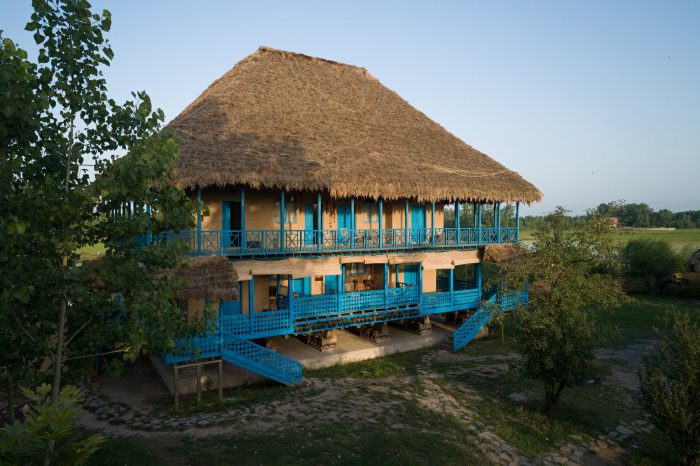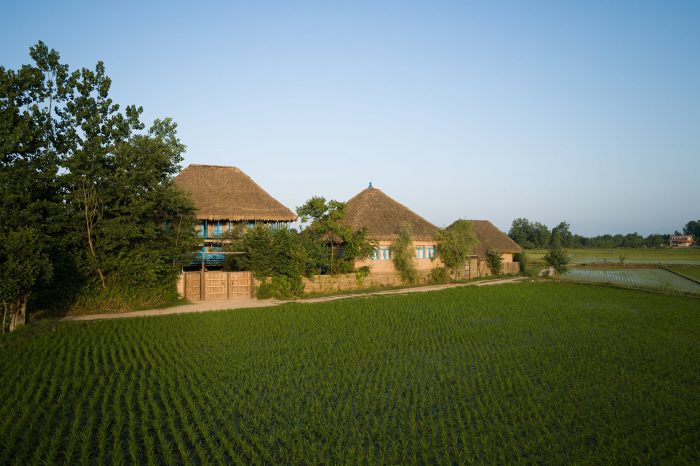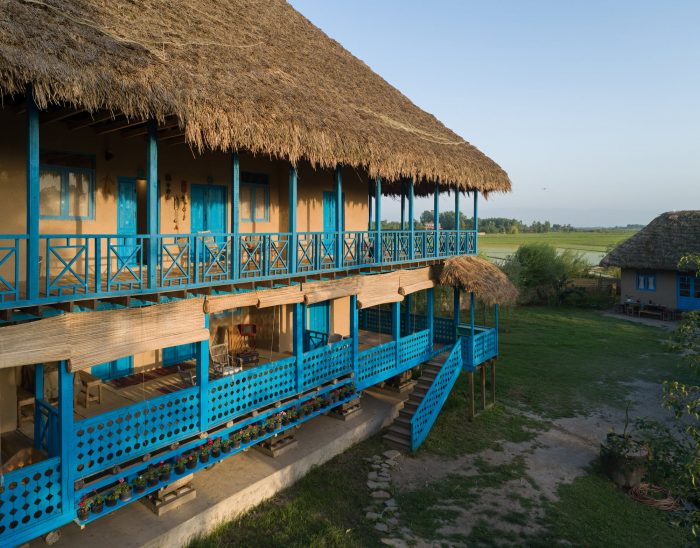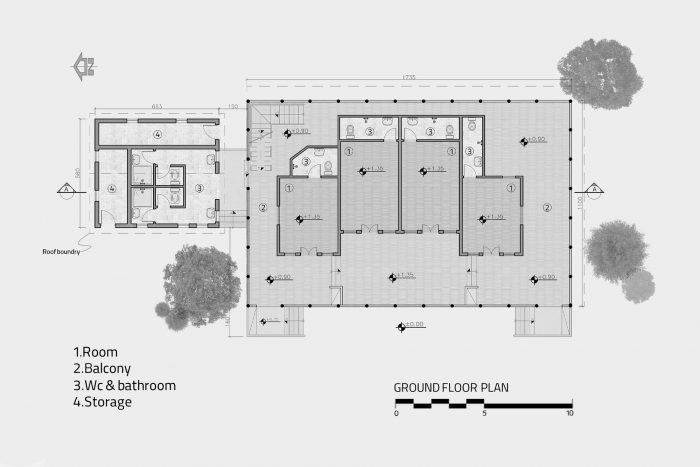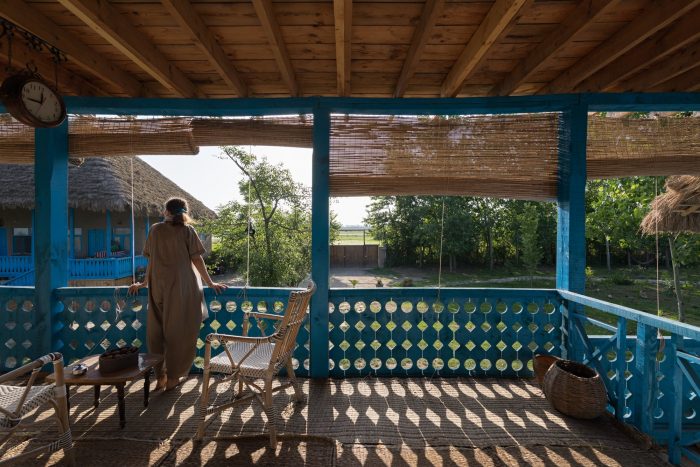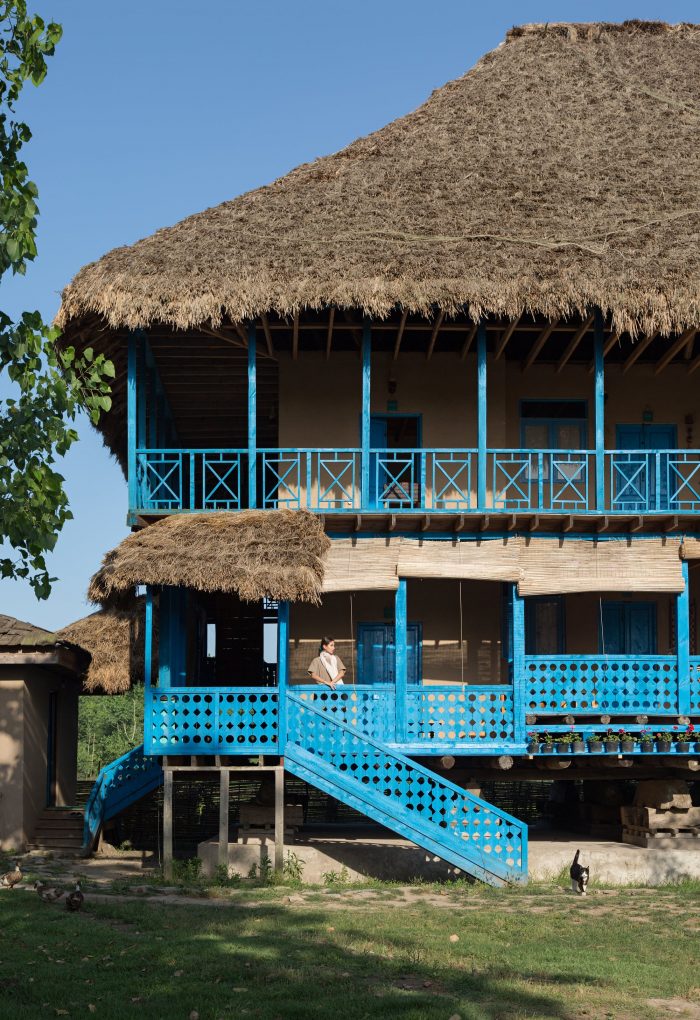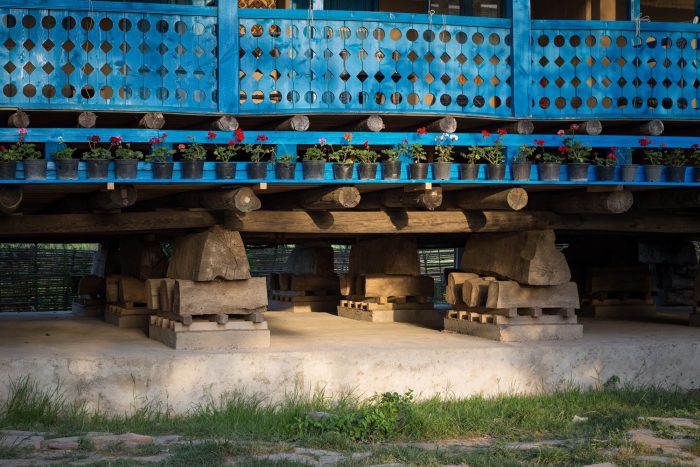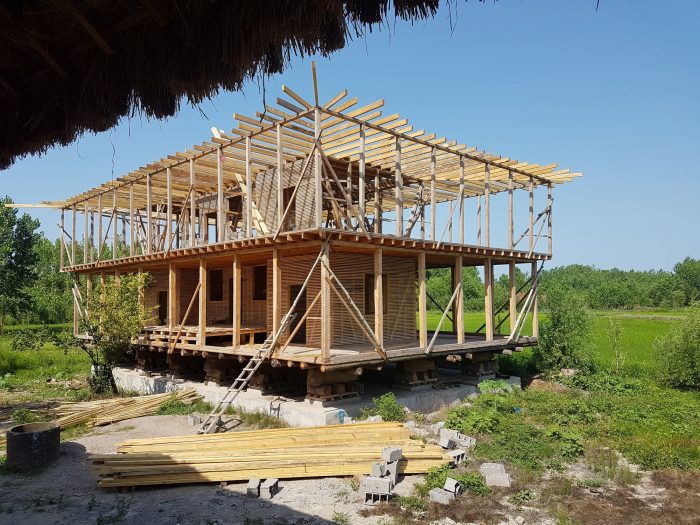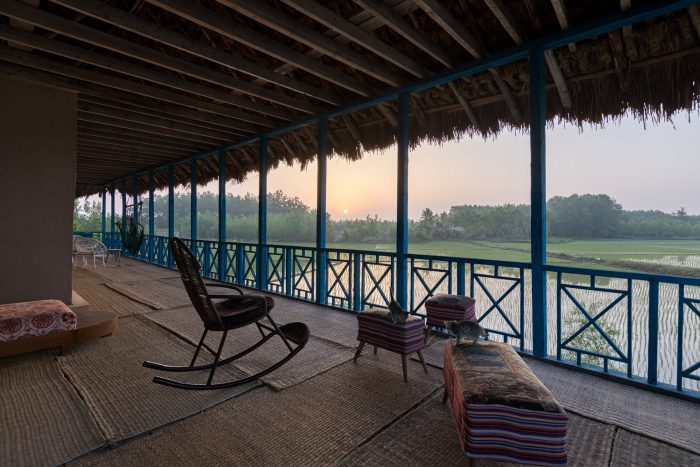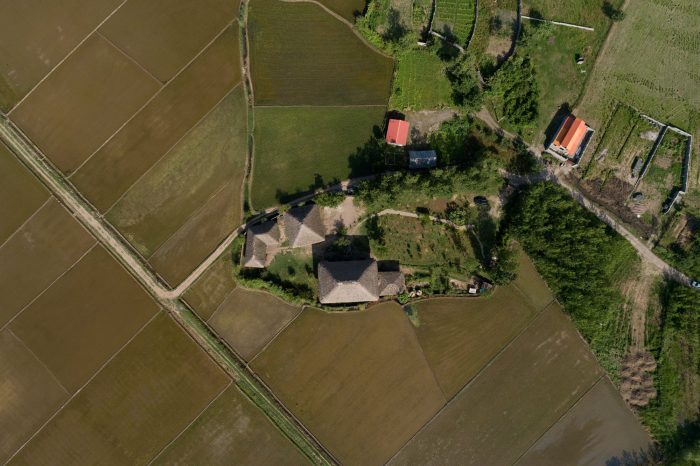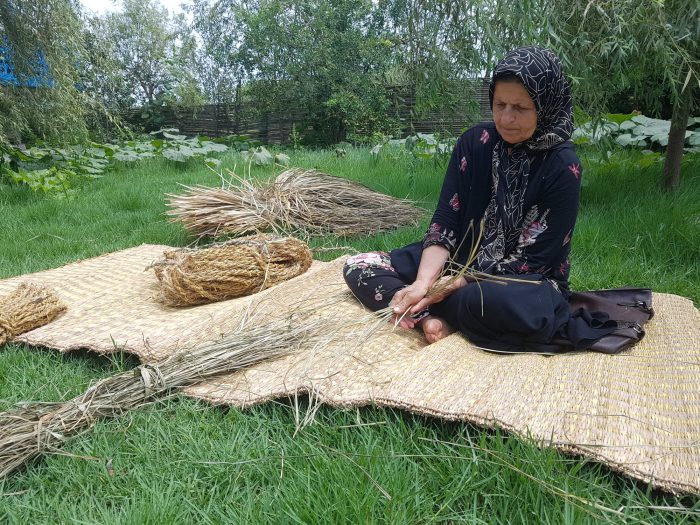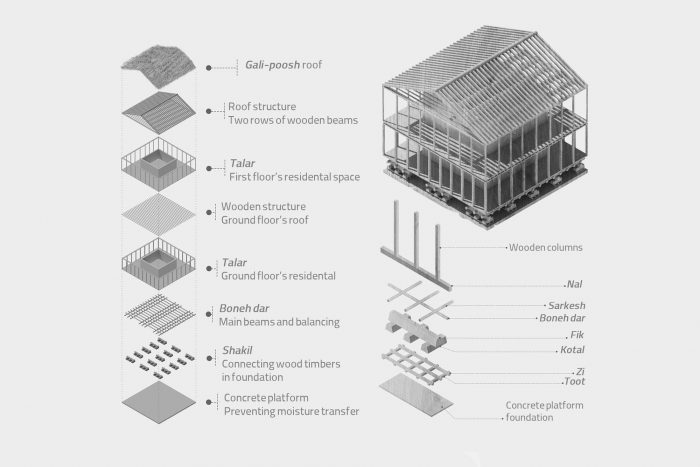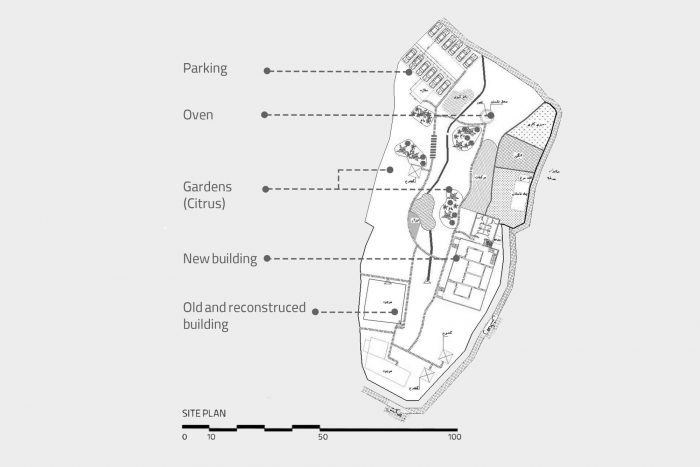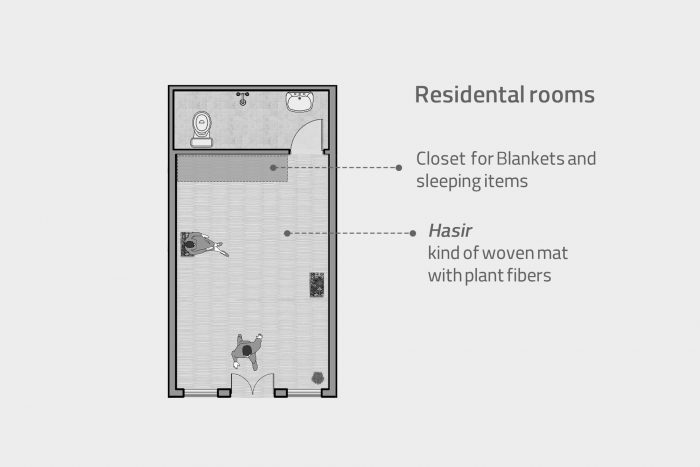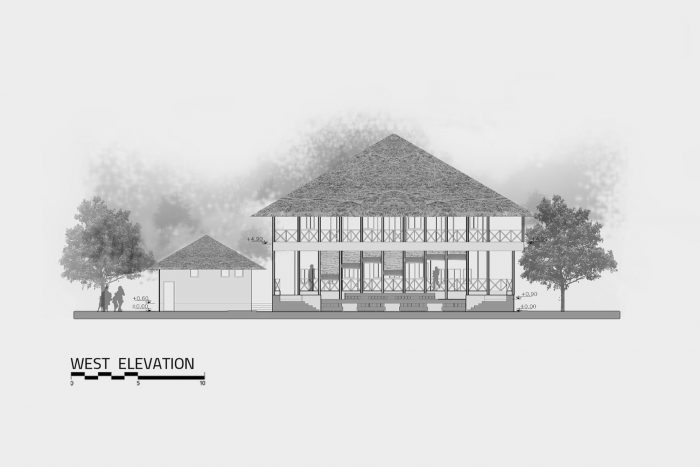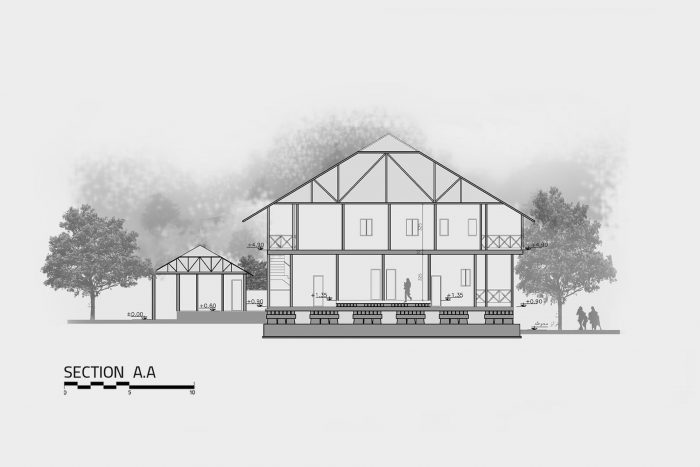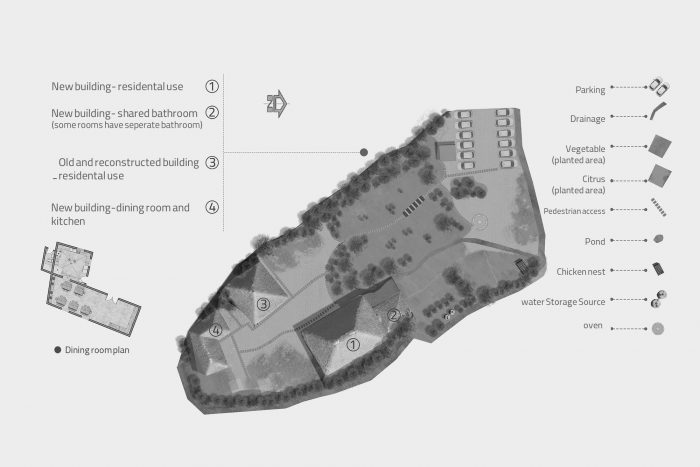Ghadimkhoone是一个位于伊朗吉兰省Astaneh-ye Ashrafiyeh,Lasku Kalayeh的生态旅馆度假村。这个生态旅馆的目的是基于使用吉兰省当地房屋的模式、方法和执行细节以及可持续建筑标准,以建立一个符合当今游客需求的生态旅馆度假村。有了这个解释,并考虑到吉兰当地房屋建筑方法的过时,以及吉兰确切建筑方法的来源和书籍非常有限,项目的第一个挑战是找到这些方法。第二个挑战是建造一个可持续的建筑,使其具有最大的弹性,最小的负面环境影响,恢复材料,并使其回归到生命周期中。第三个挑战和项目的主要想法之一是设计一个可以 “停留 “的地方。
Ghadimkhoone is an eco-lodge resort located in Iran, Gilan, Astaneh-ye Ashrafiyeh, Lasku Kalayeh. The aim of this eco-lodge was formed based on using patterns, methods, and executive details of Gilan’s local houses as well as sustainable architectural criteria, to build an eco-lodge resort that meets the needs of today’s tourists. With this explanation and considering the obsolescence of Gilan’s local house construction methods and the very limited sources and books of Gilan’s exact methods of construction, the first challenge of the project was to find these methods. The second was to build a sustainable building with maximum resilience, minimum negative environmental impact, restoration of materials, and their return to the life cycle. The third challenge and one of the main ideas of the project were to design a place to “stay”.
Ghadimkhoone生态旅馆与酒店和住宅空间的通常模式相反,不应该是一个短暂停留的地方,而是一个为用户设计的暂停和 “停留 “的地方。在Ghadimkhooneh,利用吉兰省的当地建筑模式,试图创造一个存在的空间,人与人之间的互动,以及对吉兰省当地建筑的全面接触。这种存在感与酒店和其他经常居住的地方的大厅不同,它伴随着对空间的直接理解。在Ghadimkhooneh,今天的生活流淌着昨天的灵魂和身体,这种今天的生活必需品与昨天的空间精神的结合为用户创造了一种后现代的氛围。
Ghadimkhoone eco-lodge contrary to usual patterns of hotels and residential spaces should not have been a place for a shortstop but a place that is designed for users to pause and “stay”. In Ghadimkhooneh with the usage of Gilan’s local architecture patterns the attempt was made to create a space for presence, the interaction of people, and a comprehensive touch of Gilan local architecture up close. This presence differs from presence in hotels and other frequent residential places’ lobbies, and it is accompanied by an immediate understanding of space. In Ghadimkhooneh, today’s life is flowing in the soul and body of yesterday, and this combination of the necessities of today’s life with yesterday’s space spirit creates a postmodern atmosphere for users.
建筑和材料–在地基(当地语言为Shakil)中,在第三和第四排,我们有属于该地区被摧毁的老房子的木材,这些木材应该是用于煤厂的。为了向可持续发展迈出一步,我们收集了这些木材,以重新使用它们来赋予新建筑以生命,而不是被摧毁和造成污染。如第五行和第六行(Boneh dar和Sarkesh,建筑的主梁和平衡),我们使用了1974年和1975年当地灯柱上的木材(它们被储存起来,逐渐被该地区的电力部门销毁)。因此,我们能够在50年前的材料支持下建造一座新的建筑。
Construction and material – In the foundation (in the local language Shakil), in the third and fourth row we have timbers that belonged to destroyed old houses in the area that were supposed to be used in coal factories. Trying to take a step toward sustainability, we gathered these timbers to reuse them to give life to a new building instead of being destroyed and creating pollution. As in the fifth and sixth row ( Boneh dar and Sarkesh, main beam and balancing of the building), we used timbers which were from local lampposts in 1974 and 1975 (they were being stored and gradually destroyed in the electricity department of the region). As result, we were able to build a new building with the support of 50-year-old materials.
屋顶结构是由两排木质边梁(Ajar和Sarchoob)组成。它们分别来自当地的芦苇和白杨木。结构的所有连接都没有使用新的元素(钉子和螺丝),而是使用了手工编织的稻杆(当地称为Veris),这些稻杆重量轻、原生、可在当地获得,而且价格低廉。在这个项目中,我们使用了来自吉兰的稻田和密林的材料(该地区建筑材料的重要来源),试图恢复适应气候的本土建筑的特性。四坡屋顶的最后覆盖(因为该地区的雨量很大)是通过另一种当地的方法,使用Gali(当地用于炉灶的植物纤维),这被称为Gali-poosh。
The roof structure is composed of two rows of timber side beams (Ajar and Sarchoob). These are respectively from local reeds and poplar wood. All the connections of the structure were without the usage of new elements (nail and screw), instead, the usage of hand-woven rice stems (locally called Veris), which are lightweight, native, locally accessible, and affordable. In this project with the usage of materials from Gilan’s rice fields and dense woods (important sources for building materials in the area), we tried to revive the identity of indigenous architecture adapted to the climate. The final covering of the four-slope roof (because of the intensity of rain in the area) is through another local method using Gali (plant fibers locally used for rooves) which is called Gali-poosh.
Architects: Bee Architects, Haft Shahr Aria
Area : 600 m²
Year : 2020
Photographs :Mohammad Hassan Ettefagh
Lead Architects : Mehrdad Hashemzadeh Homayouni, Arash Hashemzadeh Homayouni, Behrouz Khishabeh, Asghar Khaje Miri, Shaghayegh Moradi
Architects : Bee architects, Haft shahr aria
Design : Behrooz Khishabe, Asghar khajeh Miri, Shaghayegh Moradi, Mehrdad Hashemzadeh Homayouni, Arash Mehrdad Hashemzadeh homayouni
Construction : Sepehr Hashemzadeh Homayouni
City : Astaneh-ye Ashrafiyeh
Country : Iran


